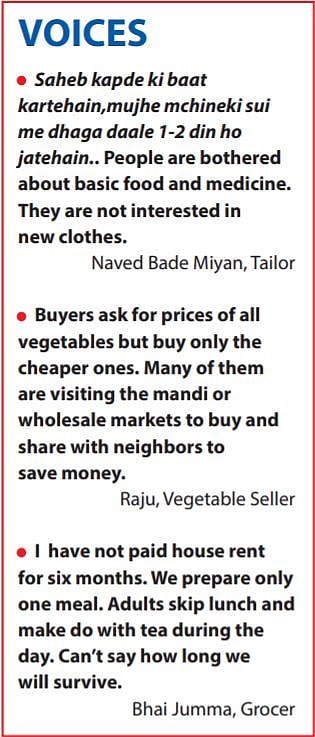Food prices dampen festive spirit: price of petrol, beer and onions at the same level
As prices go up, hoarders and traders are having the last laugh. Contrary to claims and reports onion supply was not affected by rains. But from medicines to fuel, there is no let up in prices

Inflation was an issue before 2014. BJP leaders had then hit the streets for rise in onion and fuel prices. Cartoonists had a field day and editorial writers daily castigated the government.
Cut to 2020. Price of everything is going up but there is not a whimper. The pandemic and ‘unseasonal’ rains have been blamed for rise in prices of vegetables, especially onions and potatoes. The Union Government, which had legalized hoardings, stepped in to restrict the amount of stock that wholesalers and retailers can keep. It also allowed import of onions to ensure adequate supply.
Ironically, reports now confirm that in September over 50% higher supply of onions were recorded in the Mandis of Maharashtra. Onion arrivals in Mandis in Maharashtra were 53.17% higher in September compared to the same month last year.
Why did then the prices rise? In one of his columns, Agriculture Policy expert Devinder Sharma explains that this has been an old pattern. Even when supplies fall marginally by 4%, prices tend to go up by 400%. Traders have always bought at lower prices, created artificial scarcity and sold at high prices and profit.
The Government’s press release stated that five years ago, the average price of onions was Rs 25.87. Last year the average price was Rs 55.60 per/Kg.
"Therefore, the prices have increased by more than 100% when compared with average of last 5 years and thus the price triggers under EC Act have been reached. Thus, the stock limit on the onions has been imposed with effect from today which is 25MT for Wholesalers and 2MT for Retailers for a period up to 31-12-2020," the release said.
Prices of other vegetables like radish, carrot, brinjal, cauliflower, cabbage, lady’s finger, parwal, pumpkin, peas, beans, green chillies and leafy vegetables also rose, contributing to the rise in overall vegetable inflation.

Prices of egg, fish &went up by 17.4 per cent in September from 15.9 percent in August. Supply chain bottlenecks continue to be blamed for short supplies and high prices and main supply centres in Andhra Pradesh, Tamil Nadu, Karnataka and Maharashtra are said to be struggling to meet the demand.
The Government however is unable to control prices of anything. It allows petroleum prices to rise because it needs revenue by way of taxes. It allows private hospitals to charge what they like for tests, vaccines, PPEs and even blood with prices fluctuating wildly.
But with the food prices having gone through the roof, people are feeling the pinch. “At the beginning of the lockdown, potatoes and onions were being sold at Rs 15 to Rs 20 a Kg”, recalls Lalita, a house help in Solan. Now potatoes are selling at Rs 60 and onions at Rs 80 and she does not know what to do. Mustard oil that sold for Rs 110 now costs Rs 150 and refined oil too has registered a 25% price-hike.
Shahid, a fruit seller in Delhi, confides that his daily sale has come down five times to Rs 5000. The income is not enough to live in Delhi with four children, he adds gloomily, adding that he is sending his family back.
The communal divide has added to the woes of Muslims. A small grocery.
It is not just prices of vegetables, cooking oil and petroleum products that are working as a dampener. Even prices of medicines, both life-saving and routine drugs, have crept up during the lockdown. Senior citizens who spend considerable amount of their savings on buying medicine find their monthly bill has increased by 25 to 30%.
The Red Cross Society in Faridkot (Punjab), says a report in The Tribune, released a list of 90 medicines, the MRP (Maximum Retail Price) of which is five to 10 times higher than the price at which they are being sold at the four pharmacies being operated by the society.
“As there’s a huge difference in the actual price and the MRP, we decided to release a list of 93 medicines generally used for various ailments,” the Red Cross authorities were quoted as saying. The report claimed that the commonly used antibiotic Ozon-OZ has a printed MRP of Rs 120 but the drug is available for Rs 26 at the Red Cross shop.Painkillers Piroxygen-DT and Sachahe ASP carry a printed MRP of Rs 71 and Rs 90, respectively, but are available at Rs 7 and Rs 18. RabibakDSR, a medicine for acidity, is sold for Rs 16 against the listed MRP of Rs 110.
“We are not selling these medicines at any discount or loss. The MRP of medicines and surgical equipment is at times 10 times more than the cost price,” said Subash Chander, Secretary of the Red Cross Society, Faridkot to The Tribune.
The Ministry of Chemicals and Fertilisers recommends that the MRP should not exceed more than 50 to 100 per cent of the manufacturing cost of the drugs. However, the MRP of the drugs of some reputed pharmaceutical companies is more than 500 to 1,000 per cent of its actual cost of production, the report quoted Dr Raj Bahadur, Vice-Chancellor, Baba Farid University of Health Sciences as saying.
More than 55 million Indians are pushed into poverty every year due to out-of-pocket healthcare expenses. In India, the state spends less than 1.3% of the GDP on healthcare. With the Government showing no interest in assuring public healthcare or in regulating prices, it is a double whammy that people are facing.
(Inputs from Ram Shiromani Shukla, Krishna Singh and AJ Prabal)
Follow us on: Facebook, Twitter, Google News, Instagram
Join our official telegram channel (@nationalherald) and stay updated with the latest headlines
